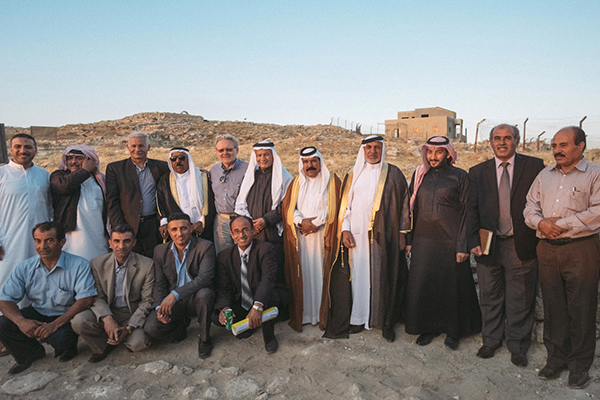AMMAN — A cooking pot excavated in 2018 at Tell Hisban, near Madaba, was one of the main topics of a webinar held on Thursday, titled “Kitchen culture in 13th-century Syria: Archaeological and botanical perspectives on dietary choices, garbage disposal, and health”.
The webinar, organised by Bonn University, gathered archaeologists and historians specialised in the Mamluk period (1250-1517).
“We also have installations, clay ovens in forms of tabuns [dome-shaped ovens] and tanurs [cone-shaped ovens], one is fired from outside and the other is generally fired from inside, and they are used for cooking of different kinds of dishes,” said Professor Bethany Walker.
Source: The Jordan Times
2017–18 marks the 50th anniversary of the start of the Heshbon Expedition to Jordan, the forerunner of the Madaba Plains Project (MPP), an archaeological project at three locations in Jordan: Tall Hisban, Tall al-Umairy and Tall Jalul. The leaders of the first team to attempt the expedition were Siegfried Horn of Andrews University, Roger Boraas of Upsala College (New Jersey) and Bastian van Elderen of Calvin College (Michigan). They completed the trip in summer 1968.
Today, MPP is the longest continuously collaborating archaeological consortium in Jordan. While the scholarly achievements that have resulted from this long-standing collaboration have been extensive and well-received, the challenge now is how to provide a sustainable future for the sites themselves.

Source: https://www.andrews.edu/agenda/47306
Andrews University is the flagship educational institution of the Seventh-day Adventist Church, including the Seventh-day Adventist Theological Seminary, College of Arts and Sciences, School of Architecture, School of Business Administration, School of Education, and School of Health Professions.
SaveSave
AMMAN — Extensive archaeological sites, including the world-famous mosaic in Madaba, have long made central Jordan a source of fascination and study for experts and tourists from around the world, but experts have grappled with how best to preserve the finds, while also making them accessible to all.
Source: Projected museum in Madaba to ‘conserve, protect Jordan’s past
AMMAN — Community archaeology, a form of archaeology directed by experts to local communities, originated at Tell Hisban during the seventies and eighties, with anthropologists wanting to learn more about traditional Jordanian practices for securing food, water and protection for their households and animals, a Norwegian anthropologist said.
“The initial reason for this interest was as a way to learn more about how large quantities of animal bones became part of the daily bundle of loose finds dug up by archaeologists at the site,” Oystein LaBianca, a professor of anthropology at Andrews University in Michigan, US, told The Jordan Times in a recent e-mail interview.
Source: Community archaeology challenges ‘colonial’ approaches to research — expert
AMMAN — When she visited Jordan for the first time in 1996, Italian architect Maria Elena Ronza described her experience as “mind-blowing”. Coming from La Sapienza University of Rome, Ronza was drawn to the Middle East in general and Jordan in particular for the country’s Roman stone architecture and the adaptation of Roman urban design to existing cities.
Source: Italian-Jordanian architect pushes for community archaeology
© 2026 Madaba Plains Project. All rights reserved. Any unauthorized duplication of images or content on this site is strictly prohibited.
